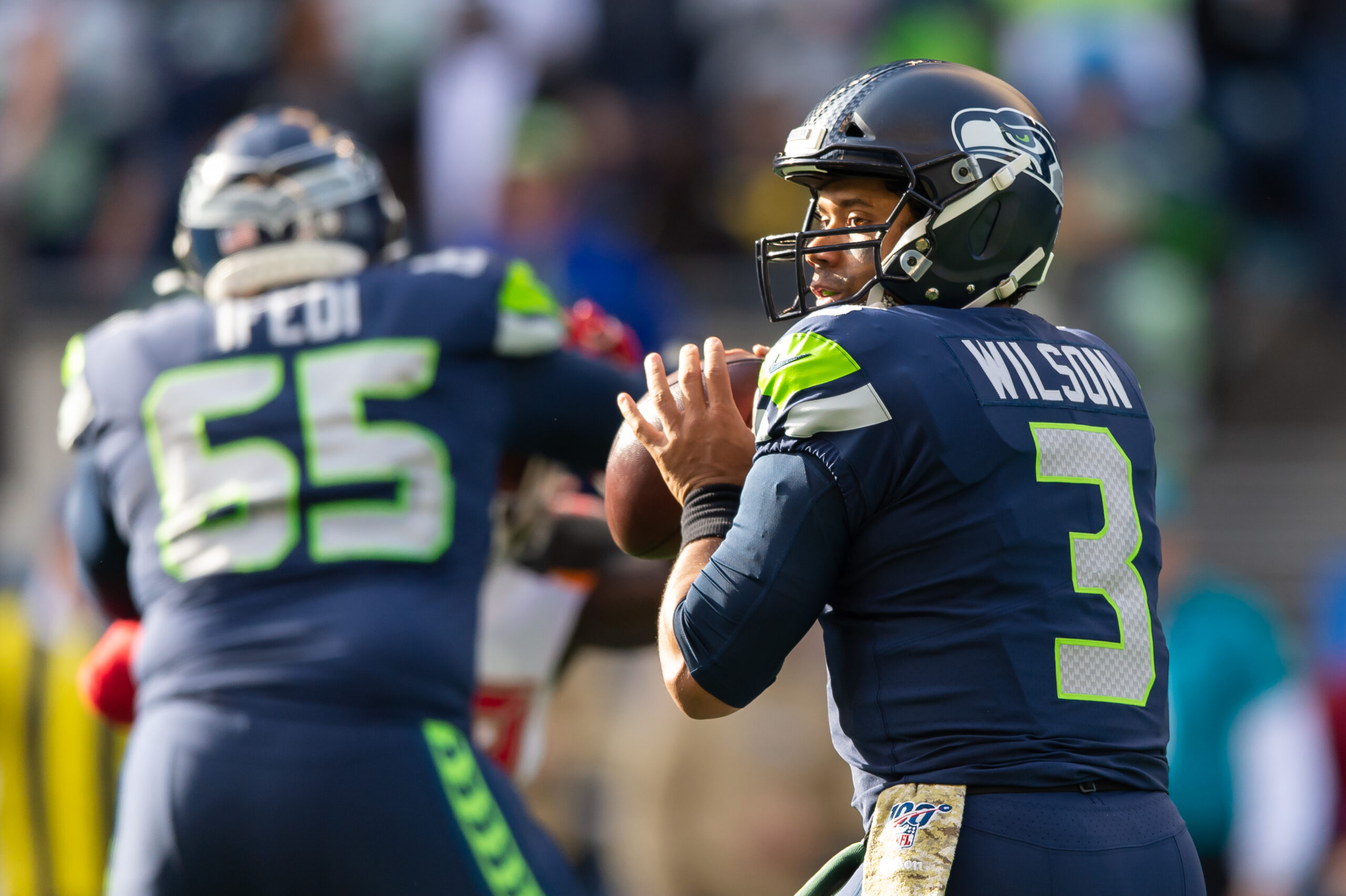The Baltimore Ravens’ Twitter recently posted a list of players that had been mocked to the Ravens with the 22nd pick in the draft. While it is far from a guarantee that the Ravens actually make the selection at 22, here are some thoughts about the 20 potential selections.
Marquise Brown, WR, Oklahoma
Brown is probably the most talented of the wide receivers in the 2019 class. With that said, Brown may not be available at No. 22, and he may not be the best option for the Ravens. Other wide receivers offer larger frames and upside as downfield blockers which would be better suited to the Ravens offense with Lamar Jackson. Brown has undeniable upside, but the fit may not be right.
Devin Bush, LB, Michigan
There is a solid chance that Bush is not available at 22. Even if he is, the Ravens might prefer to spend the pick on a pass catcher or offensive lineman.
Montez Sweat, EDGE, Mississippi State
Sweat should be gone by the time the Ravens are on the clock. Sweat has the potential to go in the top 10, and it seems unlikely he slips into the twenties unless health concerns deflate Sweat’s stock significantly.
AJ Brown, WR, Ole Miss
Brown feels like a reach at 22. The Ravens could trade down to the top of the second round and select Brown while adding more draft capital. Brown was effective at Ole Miss, but it would be hard to imagine him being taken over many of the other high-end wide receiver prospects.
Dalton Risner, OL, Kansas State
Another trade down target, the Ravens could secure Risner at a later point than No. 22. The offensive line needs help, but it may benefit the Ravens to trade down into the early stages of the second round to secure the services of the former Wildcat.
N’Keal Harry, WR, Arizona State
Not as highly touted as Marquise Brown or D.K. Metcalf, Harry has a relatively high likelihood of being available at 22. Unless there is a run of wide receivers in the teens, expect Harry to be a potential selection at 22 if the Ravens do indeed make a selection.
Devin White, LB, LSU
Devin White will simply not be available when the Ravens make their selection. White is a near lock to be a top 10 pick, and he could go as soon as No. 5.
Zach Allen, DE, Boston College
Allen as a first-round pick seemed like a lock early in the draft process, but his stock has slipped into the second or third rounds. If the Ravens want Allen, expect a trade down from 22.
Josh Jacobs, RB, Alabama
A pick that looked better before the acquisition of Mark Ingram, Jacobs represents the best that the 2019 running back class has to offer. As a likely late first-round pick, Jacobs will be on the board at 22, but the Ravens may hesitate to add the Alabama product.
D.K. Metcalf, WR, Ole Miss
Metcalf is probably the best wide receiver fit of those available due to his size and speed combination, but there is a solid chance that he goes off the board in the top 15. Metcalf is a surefire selection if available at 22, but the Ravens may not take the opportunity based on a trade down.
Johnathan Abram, S, Mississippi State
Similar to Zach Allen, Abram’s stock has fallen from a first-round talent to second-round talent. If the Ravens want the services of the former Bulldog, expect a trade into the second round.
Kelvin Harmon, WR, NC State
Picking Harmon at 22 would be a slight reach as he has more of a late-first, early-second grade. To maximize value, the Ravens would trade down from 22 and stock up on later picks.
Parris Campbell, WR, Ohio State
Similar to the likes of AJ Brown and Harmon, Campbell will almost certainly be on the board even if the Ravens trade down into the early parts of the second round. Campbell has high upside, but he would not be worth the 22nd pick.
Brian Burns, EDGE, Florida State
There is a slim chance that Burns falls to 22. He is a likely top 20 selection who could potentially go top 10. The Ravens should make other plans with the pick.
Cody Ford, OT, Oklahoma
With a run of offensive line-needy teams ahead of Baltimore, it is unlikely that Ford lasts to the early 20s. The Ravens would have to move heavy draft capital to acquire the former Sooner.
Hakeem Butler, WR, Iowa State
Butler grades between the end of the first round and the beginning of the second round, similar to N’Keal Harry. 22 may be a tad early for the former Cyclone, but Butler might not last into the second round if the Raiders, Colts, or Eagles pull the trigger on him.
Erik McCoy, C, Texas A&M
Despite being graded as a round two prospect, McCoy could hear his name called early based on when Garrett Bradbury is selected. As the consensus No. 2 center in the class, McCoy’s draft spot depends heavily on when Bradbury goes. Due to Bradbury’s potential to be drafted in the 20s, it seems unlikely that the Ravens would draft McCoy ahead of Bradbury.
Garrett Bradbury, C, NC State
Speaking of, Bradbury is the critical player for the group of centers. His draft position will dictate the remainder of the class. He has a decent chance of being available at No. 22 which means the Ravens could come knocking assuming they hold at 22.
JJ Arcega-Whiteside, WR, Stanford
Arcega-Whiteside projects as a second or third round talent, so he would likely be a trade target or a third-round target as opposed to a first-round target. The former Cardinal fits the role of a sizable target for the future, but the Ravens should skip over him at 22.
Clelin Ferrell, EDGE, Clemson
Due to the immense defense talent in the draft, Ferrell may fall into the deep 20s, leaving him as a perfect value selection. The Ravens could even afford to trade down a couple of spots and still secure his services as he could stay on the board for as long as 30 picks.
Verdict:
The Ravens will certainly tighten their focus on the smart decision for the entirety of their draft capital. General manager Eric DeCosta will be sure to maximize value and make the necessary transactions to ensure a smooth transition into the DeCosta era in Baltimore.




